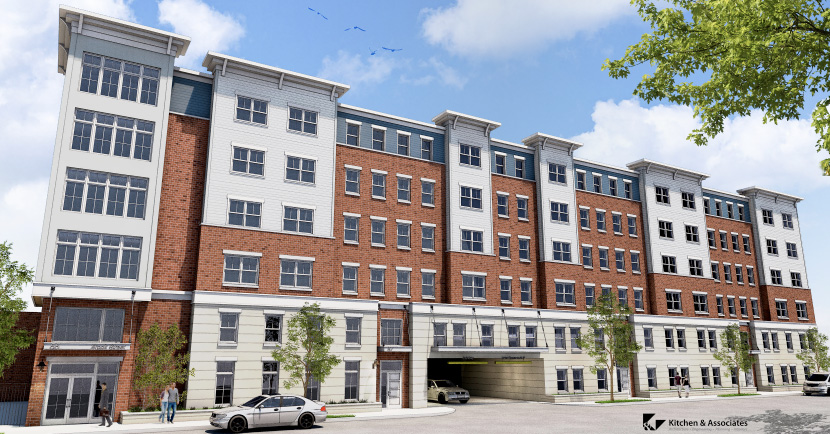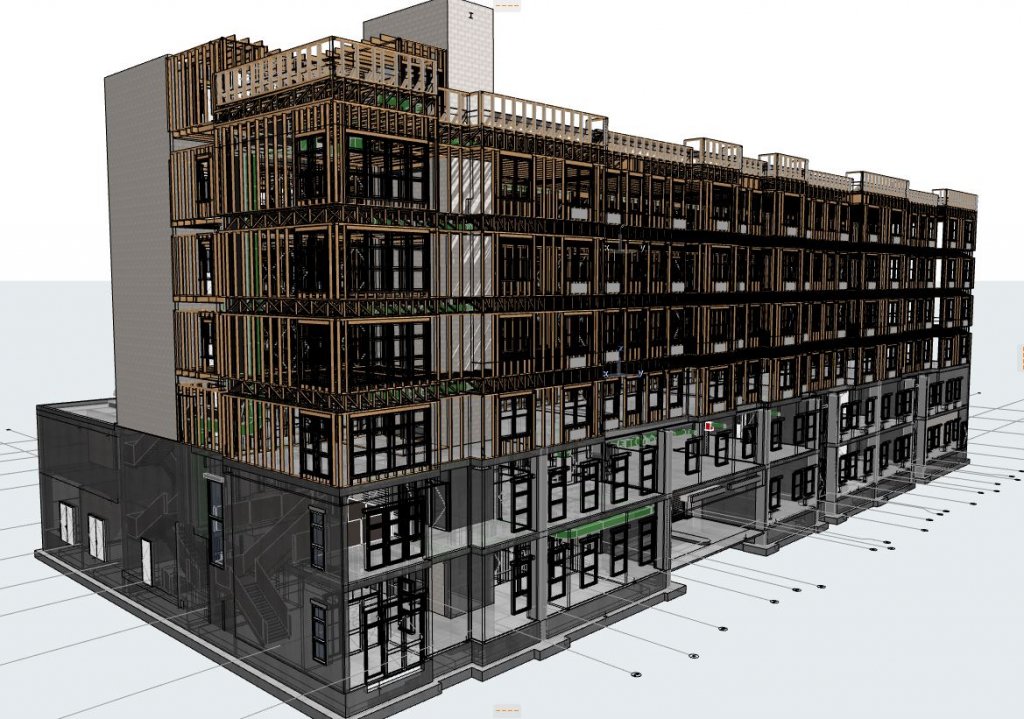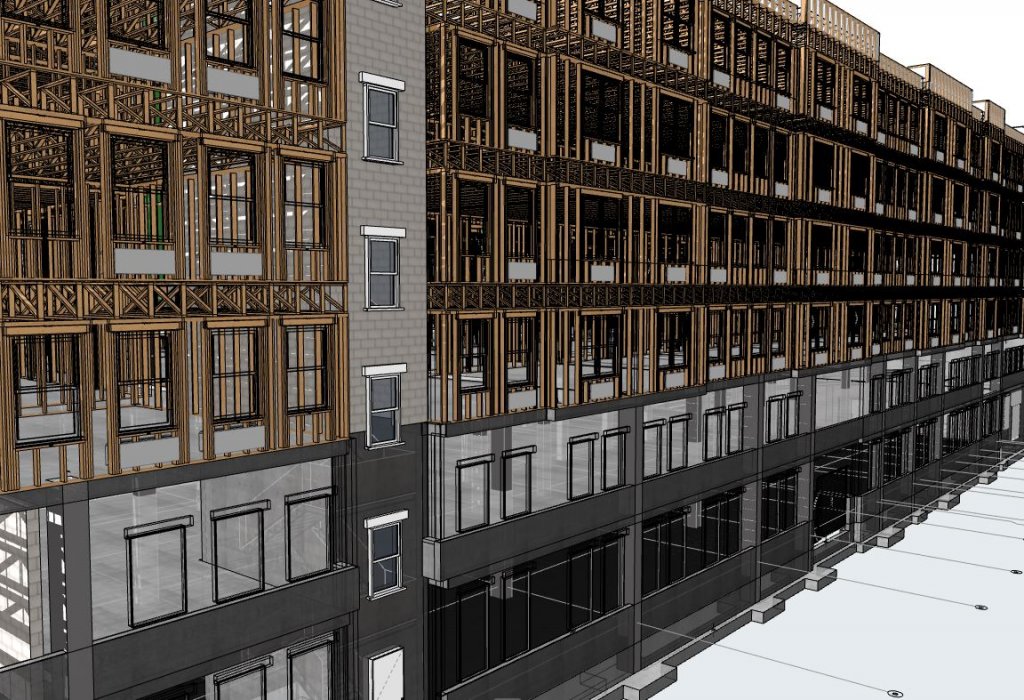The fact that Archicad empowers architects to work together, collaborating in real-time in the same model with other stakeholders is not news to most people following the trajectory of Archicad in the AEC industry here in the United States.
Today, architects and structural engineers are capitalizing on this collaboration to achieve a whole new level of integration on projects. We devoted an entire episode of GRAPHISOFT North America’s digital content series, By Design on this very topic and how it revolutionizes the process of designing buildings.
The Building Together digital event (held in July 2020) showcased Archicad’s existing collaboration toolset, and demonstrated additional features available in the latest software release which make the collaboration process even more robust. You can watch the recordings from this event here.
Still skeptical? Well, get comfortable, because this story will provide a real-world example of how an Archicad-using architectural firm can work across state lines and time zones with an Archicad-using structural engineering firm. I recently spoke to Keith Peacock, a principal at Collingswood, NJ-based Thriven Design along with principals Patrick Bird and Jake Timmons at Boise, Idaho-based Riverstone Structural Concepts to get into the nitty gritty of how the power of Archicad worked for them on the Brook Street Lofts project.
The project
In what marks the first time the team worked in tandem with Riverstone Structural Concepts (RSC) – the firm designed Brook Street Loft. The property is a commercial 4-over-2, two floors of parking, non-combustible construction with four floors of wood on top of that. The building has an H-shaped configuration, features an amenity deck on the roof and is street-facing on two sides.
With 146 units in capacity on four floors, walk-ups on the ground floor, Brook Street Loft is sited in a tight configuration. K&A worked with lot lines that could not have windows or be built on. In order to submit ideas to the local planning board, K&A created an original concept design in Archicad and built an animation using Twinmotion – a visualization and virtual reality tool that comes with the firm’s (or any firm’s) Archicad subscription. RSC also made full use of the 3D rendering and fly-through technology available through Twin Motion for marketing, coordination, and video review. Both offices having access to the same visualization tools, drawing from the same software, set the scene for maximum benefit.
Beginning in spring of 2019, Brook St Lofts went through design iterations, approval phase, construction documentation phase and K&A has secured permits. Prepping the site included demolition of an existing building on the site from the ’60s and soil mitigation and compaction issues to accept new loads.

A long-awaited collaboration
Despite the restrictions in place regarding COVID-19, construction is slated to begin in late August of 2020. Peacock and Bird both affirm that it was their ability to collaborate in real-time, in the same model that enabled that relatively normal timeline. Though it represents the first time they had been able to work together on a project, it was a long-awaited collaboration, years in the making.
“We’ve known about the great work RSC produces and tried to get a project – prior to this one – where we could work with them. Our firm did two projects in Boise about five years ago and advocated for them to be the structural engineer on the project. Our client wanted a different team at that time, so this was the first chance for us to work together.”
Throughout the process, K&A and RSC worked in the same model – even managing to scale their access when the situation called for it. K&A typically runs their mechanical electrical plumbing, (MEP) in-house, but this time around needed to outsource that aspect. The set-up accommodated that MEP team (also an Archicad user) to conduct their work in the model as well. Jake Timmons, RSC principal explains, “We were able to take K&A’s model with Archicad and operate directly on their BIM server. We performed our structural engineering and framing models, foundation models, all within their file. A mechanical team was in Archicad model with us here too, some mechanical systems were modeled in there.”
To be clear, Brook St. Lofts had an architectural firm in NJ working with a structural engineer in ID and a MEP firm in PA – all in the same model, all in real-time – live. Coordinating on this level is bound to have some hiccups, so I asked about how things went overall. Before I got that answer, Bird gave me some valuable background.
Brook St. Lofts, and other projects like it, prove it is possible to work from a different state and truly collaborate online and try to identify conflicts and issues before you get to the field.
Patrick Bird
“Keith and I first met six years ago at a BIM conference in San Diego, when I was a panelist alongside other firm principals and construction company management to demonstrate the value of having a structural engineer on the same software as the architect. He saw the value of it right off-the-bat – but it does bear mentioning that at that time, online collaboration fell into a ‘bucking of the system’ way of doing things. It took some work, convincing others to move away from the more traditional, conventional methods. Persistence paid off for both of us. Brook St. Lofts, and other projects like it, prove it is possible to work from a different state and truly collaborate online and try to identify conflicts and issues before you get to the field.”
Recognizing that each firm and structural engineering firm will have its own set of reasons to resist this method, I was curious to know where the resistance comes from? And once it is addressed, how does that lightbulb moment translate into “Why didn’t I think of this years ago? Peacock says he encouraged his team to look at the bottom line – to see how many work hours can be saved by doing it all in Archicad on the same server.

“Architectural firms can buy structural engineering services affordably from another firm on a different platform, sure. The problem arises when I must remodel all their work in my model to fully coordinate with it. The process involves interpolating what the structural drawings might show – using 2D drawings – without full certainty we know what they are talking about. The time spent putting all that information in adds up to a lot of hidden hours.”
About those hidden hours – meaning, non-billable hours, Peacock went on to say, “If we take the non-billable dollars we’d be spending and instead pay a little bit more for a structural team working within our model, it pays us back ten-fold because we do all the coordination as we go.”
A close look at the bottom line
“Architectural firms can buy structural engineering services affordably from another firm on a different platform, sure. The problem arises when I must remodel all their work in my model to fully coordinate with it. The process involves interpolating what the structural drawings might show – using 2D drawings – without full certainty we know what they are talking about. The time spent putting all that information in adds up to a lot of hidden hours.”
About those hidden hours – meaning, non-billable hours, Peacock went on to say, “If we take the non-billable dollars we’d be spending and instead pay a little bit more for a structural team working within our model, it pays us back ten-fold because we do all the coordination as we go.”
Peacock explained that removing the effort spent publishing out backgrounds to structural and having to interpolate them saves so much time. Live coordination in the model makes everything very clear. He called it “the sell factor” – and considers it a very important part of moving to a BIM philosophy across the board. It can even help MEP firms move away from 2D symbols and use in three-dimensional objects for all their parts.
Making live collaboration work
A common objection to the live coordination method can stem from how comfortable an individual might be working with others in a database and how communication in that database is handled. At K&A, the protocol for dealing with that is relatively simple and can quickly address some of the unease at that notion, offers Peacock. “If you put it in, you can edit it. If you did not put it in, you must ask for permission or talk to the folks that did before you make any changes. This ensures we are rigorous about our communication throughout the process – so far, I think it has been very successful.”
That successful collaboration could not be timelier. With so many office environments maneuvering into a mandatory remote workforce, any aversion to coordinating with out of state firms has been summarily shoved aside. Nearly everyone must work remotely, so why not remove the limitations of geography and align with a firm that can work live in the model? Bird adds that his team managed the workload – having a point person, Jake – as the point person day-to-day in the model – with other team members concentrating on other aspects of structural engineering.
“We split it up where Jake did all the wood portion above and I kind of worked on the engineering of the concrete below and then we had our BIM team coordinate everything. It’s another attribute to the collaboration that even within an office you can still be separate and the same and coordinate through the server. The technology kind of speaks for itself. We are grateful that Keith gave us a chance to prove it. I know that Keith has said his team spent fewer hours on the project than normal in terms of dealing with coordination even added oversight on communicating clearly with all consultants.”
Time Savings
It was time for me to ask for specifics in terms of time savings – so as I often do with firms that agree to talk about their Archicad process here on the blog, I pressed for concrete details. Asking my interview subjects to gauge time savings on this project and extrapolate out man-hours or even billable, productive work to arrive at a measure of efficiency gained. Peacock delivered an anecdote that was jaw-dropping. While reviewing the model he says he noticed an issue that normally might have taken three days of back-and-forth to solve.
“We needed to bring electrical bus feed up from our switchgear room up through two floors of the garage and get up into our electrical services on each floor. We were trying to find the best place to bring that bus up. We were on a GoTo screen-share and everybody has the model open on their end, but we are also looking at a screen. Our colleague Jessica makes the change right there in the model, exactly what we were all kind of talking about as the solution. Everyone saw it as it happened and the issue was resolved in a ten-minute conversation “Yep, that works” and we hit release.”
From that online meeting – the electrical team has the bus duct in rough form, the hole in the slab was put there, and the team at RSC went about adjusting concrete slabs to coordinate with that. Without all teams in the model live – Peacock estimates it could have taken four or five emails back and forth, each one of those email exchanges costing 10 minutes of focused time or more. Multiply that by six people and it starts to add up across the project. That was just one issue.

Trust, workflows, protocols, and collaboration
The illustration right represents a willingness to work together to solve problems – based on a mutual understanding of who gets to touch which parts of the model. When RSC approaches a first-time project with an architectural firm, Bird and Timmons agree they have learned to apply their 13 years of experience to establish guidelines for success.
“The trial-and-error of our early days taught us well,” says Timmons. “When starting a new project especially with a new client we recognize that every architect works differently. So even if we have a list that says, ‘Here’s how we do things, here’s how everything works on our end’ it is not always so. We do have certain standards as to where the structural information wants to live, when can it be put in 3D, when does it need to be turned off in 3D and so on.”
RSC begins with a kick-off meeting for new clients, to establish a workflow and adjust from there. Architectural firms receive a BIM Server protocol from RSC, so they have an awareness of what will be brought into the model structurally. The protocol can also include work environments, pen sets, graphic overrides, and explanations about where those settings live and should be represented. When RSC clients need things shifted, RSC tailors them to the needs of the client. The aspect of trust that is crucial in this set up, according to Peacock, can be established over a beverage of your choice.

Any architect I have worked with considers their models art. They can be very hesitant to open it up to an outside consultant.
Jake Timmons
I have a lot of confidence and a lot of trust in Patrick and Jake and hung out with them a lot in bars until the wee hours of the morning. All kidding aside, they have access at server level permissions in our server to make changes to team members abilities to do things and to drive things within the project in terms of layers and all of those graphic overrides, they have full-write ability in that. I think that’s part of that is having confidence and trust that people are going to be professional and not going to do damage in your system. These guys exhibit that.”
Patrick Bird agrees, “We welcome all vetting and necessary referral checking to get to the level of trust needed with this process. It is a huge obstacle to overcome. Over the years the initial meeting and planting the seed eventually leads to letting down the guard and letting the consultant come into your model that you worked so hard to build up. The trust helps make sure it remains whole as you built it.”
To that Timmons adds, “Any architect I have worked with considers their models art. They can be very hesitant to open it up to an outside consultant. We come from a position of respect and appreciation when we are working in it. Open communication and an understanding that we are not going to destroy the work that the architect spent hours on, comes with experience and practice and learning the best way to do things.”
